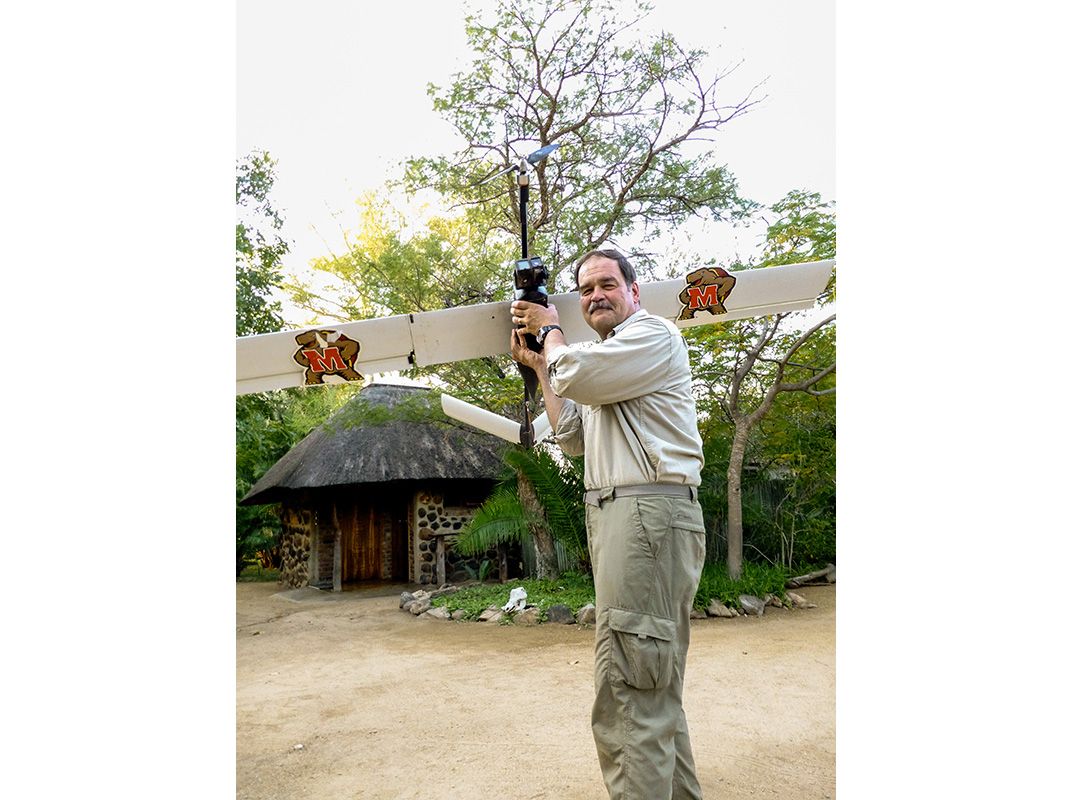Can UAVs Save the Elephants?
Sentinels in the sky are hunting the poachers.
/https://tf-cmsv2-smithsonianmag-media.s3.amazonaws.com/filer/27/57/2757ac00-1e24-4543-9257-ef21abc0f5ad/collage.jpg)
Biologists predict that within 10 years, rhinos and elephants could be extinct in the African wild because of poaching. Wildlife rangers patrolling millions of acres of land are mostly helpless to stop the massacre; poachers kill in the dark of night, remove the parts they want, and disappear, all within minutes.
But a new system could put an end to poaching. An organization called Air Shepherd has teamed up with data researchers at the University of Maryland with plans to lay a blanket of smart air surveillance over Africa’s most vulnerable wildlife parks. Small, battery-powered UAVs are much more mobile than park rangers and virtually silent, making them ideal for spotting poachers who think they’re alone in the bush. But while a drone can find poachers anywhere, that’s helpful only if rangers have already been positioned nearby to stop them.
Tom Snitch, a professor at the university’s Institute for Advanced Computer Studies, spent several years working with the U.S. military in Iraq to reduce casualties from roadside bombs. His team used satellite imagery and a computer algorithm to model where bombs were likely to be placed, then used drone surveillance to find and track the bombers themselves. In Africa, Snitch’s new algorithm factors in the movements of animals within a park, the locations of water holes, the daily weather, even the distribution of rhinos’ favorite cactus snack, then adds the locations of recent poachings; the result is a flight pattern for the drone.

Flying on autopilot and using an infrared camera to see at night, the drone patrols the likely poaching zones and sends live video to a command vehicle. If the drone spots anything unusual, rangers are dispatched to apprehend anyone who doesn’t have permission to be in the area. The possible poachers are turned over to authorities.
Air Shepherd ran pilot programs in private parks around South Africa, where rhinos were being killed at a rate of 12 to 18 every month per park. In the six months Air Shepherd patrolled, that number dropped to zero, and more than two dozen poachers were arrested.
Snitch says the system works not just because it intercepts poachers in the field, but also because the patrolling drones discourage poachers from hunting at all. The University of Maryland team does demonstrations in nearby villages, where poachers come from. They launch the drone from a remote location and fly it to a village, while the locals watch its video feed on screens mounted on a vehicle. When they see a video of a group of people standing around a truck, it doesn’t mean much—until the operator asks the guy in the blue shirt to wave. When he does, that makes an impression.
Snitch points out that, despite their reputation as archvillains, poachers aren’t terribly resourceful criminals. “These are guys who know a local area,” he says. “They’re probably farmers during the day.” And once they know they’re being watched by an invisible opponent, the payoff from poaching doesn’t seem worth it.